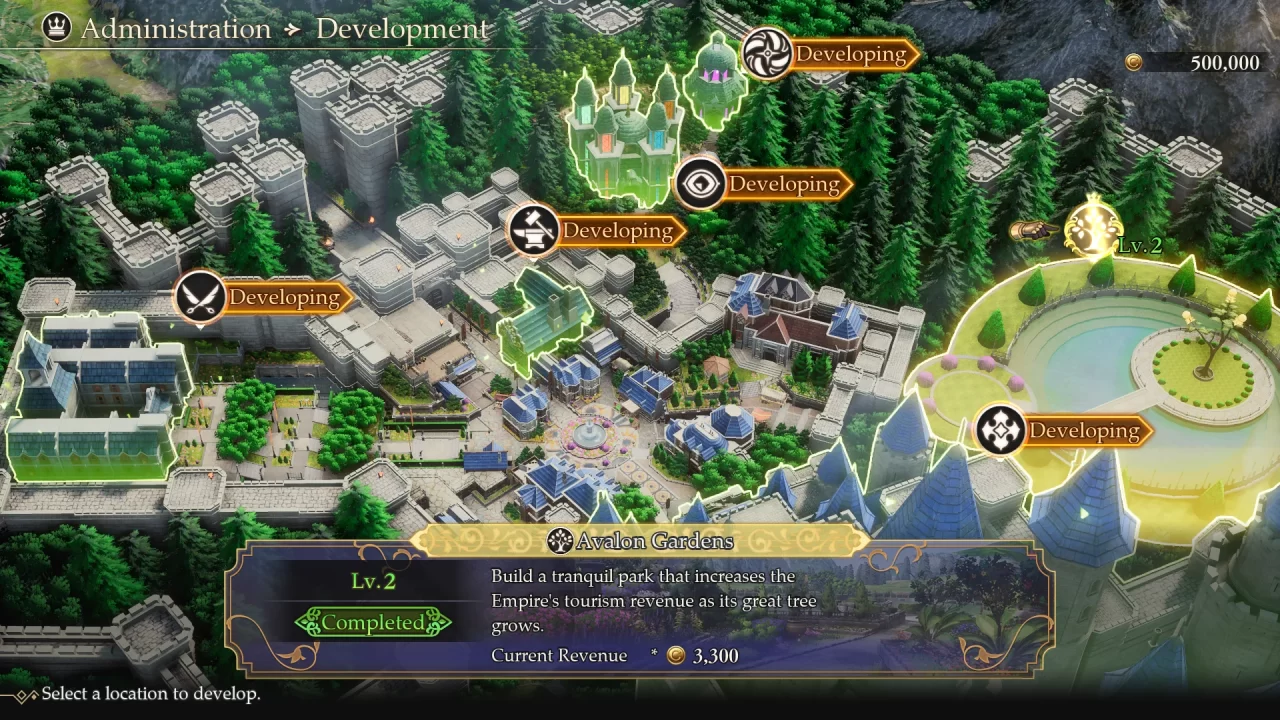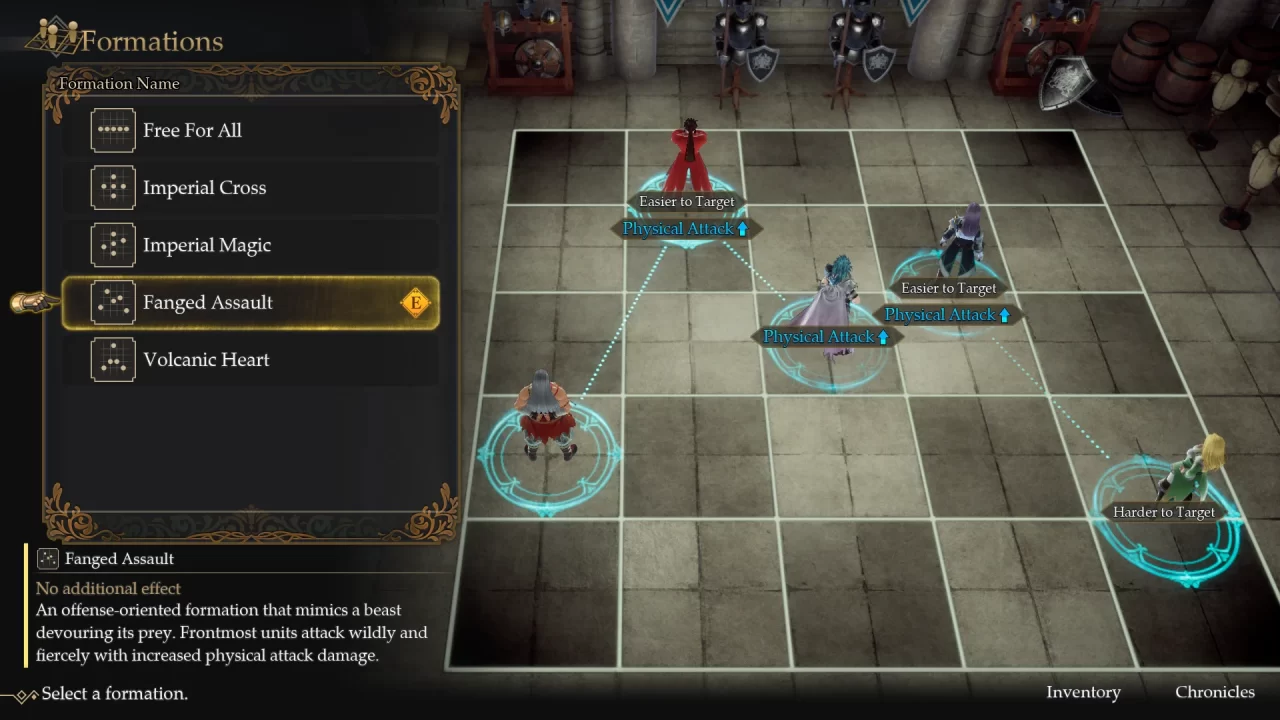Tech
Romancing SaGa 2: Revenge of the Seven Review | RPGFan
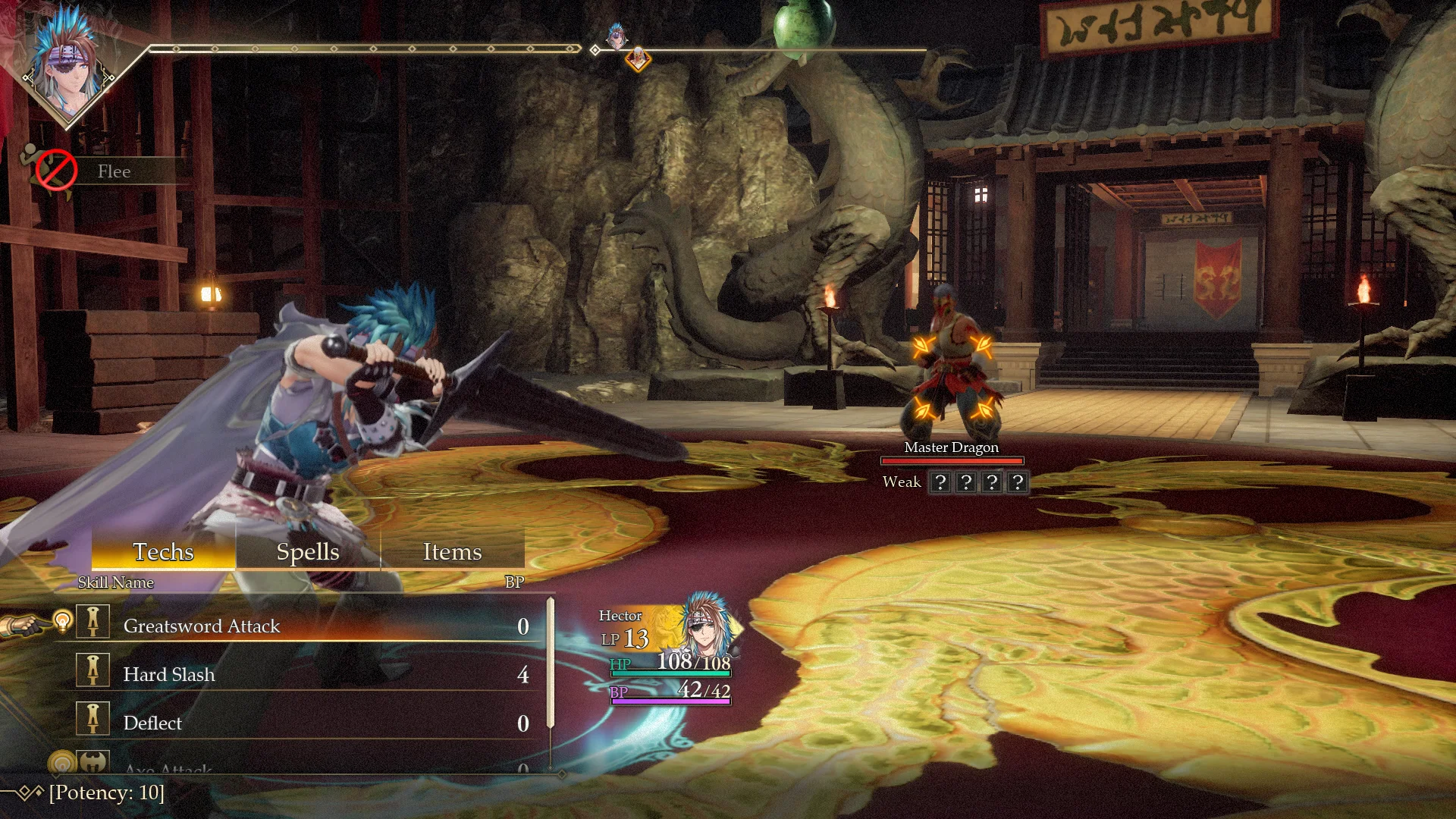
Conceived by Akitoshi Kawazu and released in 1993, Romancing Saga 2 made a bold break with the previous entry in the series, focusing on a generation-spanning imperial lineage waging a centuries-long war against interdimensional beings known as the Seven Heroes. This concept proved immensely popular, and Romancing SaGa 2 became one of Square’s best-selling Super Famicom titles. The game was finally localized with the 2016 mobile and console remaster, allowing us neglected Western SaGa fans to experience the original with minor updates. Almost a decade later, Square Enix and the team from the excellent Trials of Mana remake have returned with a full-fledged remake: Romancing SaGa 2: Revenge of the Seven.
Revenge of the Seven begins with Emperor Leon of the Kingdom of Avalon and his son, Gerard. The Seven Heroes from legend have returned, but their forms have been corrupted and they have brought with them chaos and turmoil, plunging the land into darkness. Monster attacks have become more frequent, and every kingdom across the land of Varennes is facing calamity in some form caused by the Heroes’ influence. Avalon is invaded by one of the Seven, Kzinssie, and he kills Gerard’s brother (Victor) who was defending the kingdom. Leon and Gerard make preparations to assault Kzinssie’s stronghold, and a mysterious woman named Orieve shows up to counsel Leon. Leon dies in the ensuing battle, leaving Gerard alone to ascend to the throne and avenge the deaths of his family members.
However, Orieve returns to Gerard and explains her purpose and Leon’s plan: Orieve has bestowed the power of inheritance magic upon Avalon’s imperial line; Leon intentionally fell in battle against Ksinzzie’s Soulstealer technique to pass on his power and knowledge of how to overcome it to Gerard. This system of inheritance is the primary narrative device and central game mechanic of Romancing Saga 2. Gerard assumes his role and newfound power as emperor, assembles a retinue of knights, and faces Kzinssie again, this time emerging victorious and passing along his power to the next in line.
All of the central SaGa series mechanics return: turn-based combat, a technique and proficiency system in place of traditional character leveling, LP points which result in permanent character death if depleted, and glimmering new techniques randomly during battles. The generation and inheritance system is woven expertly with traditional SaGa mechanics. Switching the emperor’s class per generation is a necessity, as this allows them to become a jack of all trades and learn new combat formations that can be the difference between victory or failure.
Some quests require an emperor of a certain class or proficiency to progress, and there are passive abilities specific to each class to learn (to later master and use between classes) that also provide additional bonuses. This robust class system complements the traditional SaGa technique system very well, as you learn techniques through weapon proficiency rather than class. This allows a great degree of freedom when building characters, allowing you to mix and match techniques seamlessly between characters, but also ensuring each class feels distinct through their class abilities and stat distribution.
This level of freedom extends to the non-linear game progression. Once Gerard’s initial story is complete, you have essentially free reign to visit any location you wish. Sea routes or field locations block off most destinations, but you can generally open these routes and uncover new locations in any order. This ensures that each player has a different path through the game, and outside of the initial battle with Kzinssie, you can fight the Seven Heroes in any order. Due to the non-linear structure, some events or characters are missable, but every player will eventually end up in about the same place once they reach the age of the final emperor.
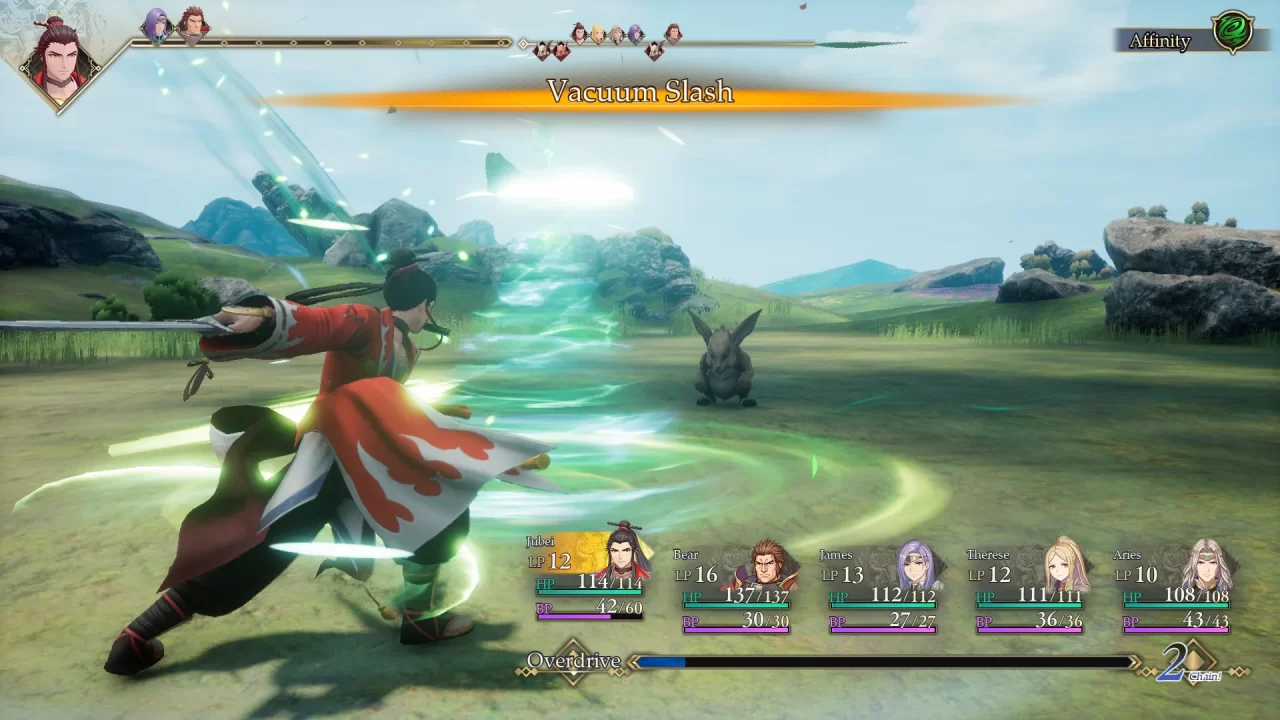
The biggest downside to this system is it doesn’t always reward progressing in multiple main quests at once, due to the generation and inheritance system. After major story events or acquiring sufficient new territory, the game automatically engages a timeskip (usually around 100 years) and you need to pass on your skills to a new emperor. There were a handful of times where I progressed significantly in multiple main quests and was forced to switch generations and lose progress on one quest upon finishing the other. Losing some progress was a little frustrating, but I found that any doors I’d unlocked in a dungeon, items I’d acquired, or techniques mastered stayed with me, which softened the blow considerably.
Furthermore, because most of the quests are designed around this generational structure, I was never entirely locked out of a region or class even if I missed something. Instead, the event would be altered in the next generation, yet I could still reap the benefits of the quest. This is a stark contrast to some other SaGa titles, where the impact of missing a quest line or character can be significant and ensures that Revenge of the Seven is approachable for newcomers to the series.
Another consequence of the non-linear progression and centuries-spanning narrative of Romancing SaGa 2 is a lack of character-driven storytelling. While the introductory section with Leon and Gerard provides a nice narrative justification, there aren’t specific characters to get attached to afterward. Thankfully, Revenge of the Seven rectifies this through the Memories system. Throughout the world, there are pedestals that contain little snippets of the Seven Heroes’ lives. This gives the player the chance to find out what each of the heroes was like before the events of the game, how they came to be known as the Seven Heroes, and how they met their downfall at the hands of the Ancients and the Hierophant. Each of these scenes is fully voiced, in-engine cutscenes, and they provide ample context for what happened to the heroes and why they wish to seek revenge on the world. These moments add more character development for each hero and make the climactic fights against each one that much more impactful.
As emperor, a major part of progression is the expansion and development of your empire. Solving the issues plaguing various regions causes them to unite under your banner, which in turn raises the amount of funds gained from each battle and unlocks new development opportunities. There are four major facilities you can build and upgrade: The Smithy, the Incantation Lab, the Imperial University, and the Avalon Gardens. Most unique among these is the Imperial University, where you take tests on your knowledge of various locations and events in imperial culture and history (your playthrough) to earn money and upgrade materials. There were even a few times where I was unsure how to progress, and a university exam question reminded me of a location or character that helped me progress. It’s such a clever way of contextualizing the player’s journey through the game through a historical lensn and exemplifies how Revenge of the Seven utilizes the concept of an RPG journey spanning centuries to its fullest extent.
Revenge of the Seven institutes two major changes to the battle system: the timeline and United Attacks. While the core turn-based mechanics of the original battle system remain, player and enemy turns are now placed along a timeline. Certain status effects and spells can influence this timeline, moving turns sooner, pushing them further back, or outright canceling them altogether. This adds an extra dimension of strategy to combat, as you can plan for devastating attacks or set up combos. Characters can execute United Attacks by spending a full Overdrive bar (filled by hitting enemy weaknesses) to have multiple characters attack in succession, regardless of their position on the timeline. I mostly used this for an immediate burst of damage, but it can leave you open to successive enemy attacks, creating a nice balance of risk vs. reward.
Most of the other mechanical changes are minor but help demystify mechanics that were opaque in the original. For example, there is now a little lightbulb icon next to techniques that are likely to glimmer a new technique, which takes guesswork out of learning new techniques. A new Chronicles menu tracks quest completion and map markers for quest locations. This quest guide strikes a nice balance between providing a general idea of how to progress without spelling things out entirely. I found this to be immensely helpful, as the non-linear game structure can become confusing, especially when juggling multiple quests. Small changes define Revenge of the Seven; the developers didn’t alter the underlying systems or mechanics but instead changed how visible they are to the player. This approach makes the game much easier to get into for new players without sacrificing the mechanical depth or combat challenge that made the original game so appealing.
Something that has been massively overhauled in Revenge of the Seven is the visual presentation. The Empire of Varennes has been lovingly rendered in fully 3D space, expanding the scope of each location across the game world. Each town and village in the game is incredibly detailed, with numerous interiors to enter, NPCs to talk to, and unique landmarks and layouts. This level of detail extends to everything from how NPCs dress to the architecture of buildings, all of which fit the topography and culture of their respective part of the world.
Nothing exemplifies the level of detail in the game’s presentation better than the character models, particularly of playable members of your imperial retinue. The character designs transitioned well from the classic sprites to 3D models with a modern anime style, yet still maintain the fanciful flourishes of Tomomi Kobayashi’s character concepts. The degree of variation in character models for each class is even more impressive. Between generations, the available characters from each class change color scheme, hair style and color, and other cosmetic details like scars, hats, or other accessories. This gives each successive generation of characters a sense of identity beyond another generic set of party members.
The monster designs received the same treatment, with the entire original fiend menagerie transitioning into animated 3D models quite masterfully. The sheer number of techniques (and thus accompanying animations) enemies can use is dizzying, but Revenge of the Seven effortlessly conveys the weight of an ogre’s club or the skewering of a narwhal’s horn through the battle animations. The player’s techs are equally impressive, with characters leaping into battle or assuming a unique pose accompanied by a voice line or two.
The auditory experience has been equally enhanced as the visuals, with full voice acting in story scenes and unique battle quips for each character class. The music has received a complete orchestral rearrangement by Kenji Ito, and the result is fantastic. The battle theme is bombastic without being overbearing, the town music is often cheerful or contemplative depending on the mood, and the unique tracks for each encounter with the Seven Heroes are excellent capstones to climactic battles. Furthermore, every single original track is still included in the game, and you can switch between the two soundtracks in the options menu at any time.
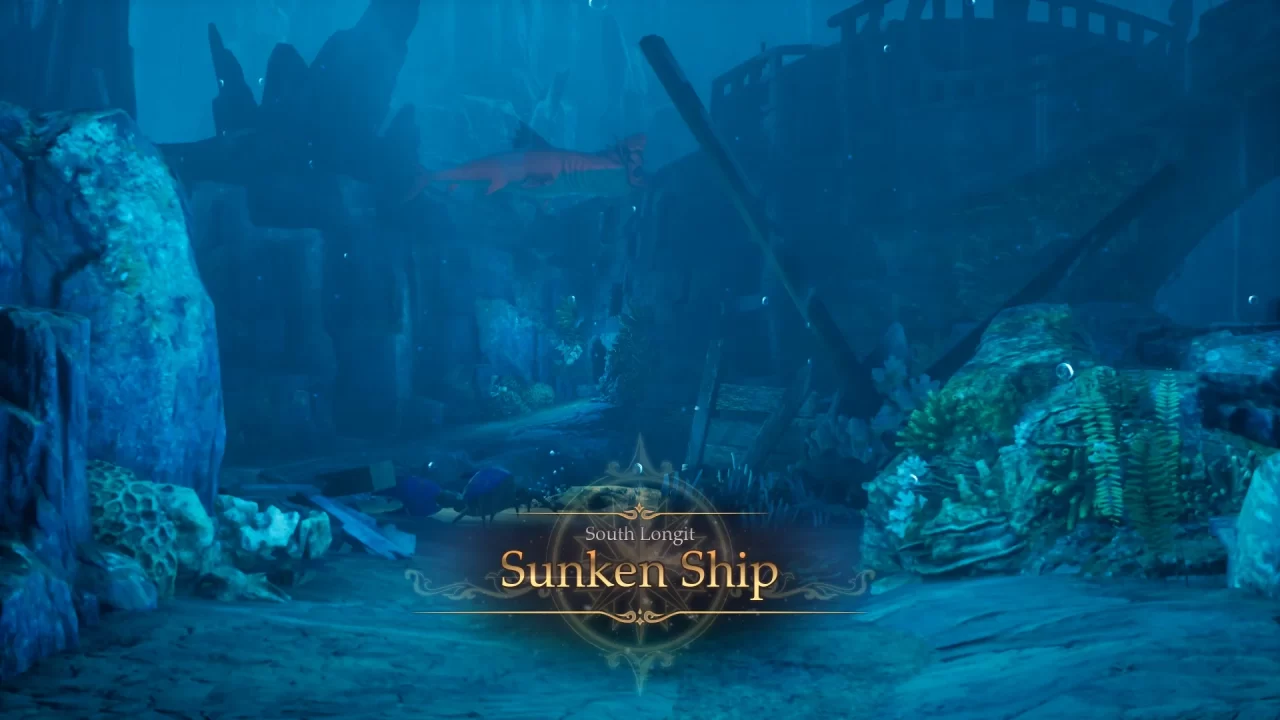
These overhauls to the game’s presentation enhance not only the audiovisual experience but the gameplay as well. Dungeons often feature new traversal methods like sidling along walls, jumping across platforms, or avoiding traps. Some dungeons have puzzles to solve, while others focus on creating interesting layouts packed with ambush spots for enemies and cleverly hidden chests. These additions go a long way to keep the constant dungeon crawling and combat encounters from growing repetitive over the game’s 40+ hours. I appreciated how these design choices gave each location a distinct feel and character, particularly how these lairs reinforced the personalities or attributes of each of the Seven Heroes. For example, Bokhohn’s Landship is a maze of conveyor belts and locked doors leading into dead-ends and enemy ambushes, which is fitting for a clever tactician who prefers to hide in the shadows and let his minions do his bidding. The noble lancer Subier’s stronghold in the frozen sea is the opposite: a straightforward gauntlet of sea monsters you must overcome to prove yourself worthy to face the Master of the Seas.
In my eyes, Romancing SaGa 2: Revenge of the Seven is the ideal RPG remake. The game makes great use of the expanded scope and presentation afforded by more powerful hardware. However, the core tenets of the game and systems design remain largely unaltered, preserving the unique experience of guiding Gerard and his descendants across centuries of conflict against an imposing, interdimensional force. Square Enix has successfully delivered the definitive way to experience one of the best games the SaGa franchise has to offer, and in the process provided the best introduction for new players curious about the 35-year-old franchise. I know there are so many other RPGs releasing this October competing for player’s time, but Revenge of the Seven is a triumph, and I urge any fan of RPGs to give it a shot.

